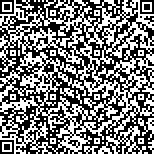| Quote
: |
戴宗顺, 唐媛媛, 尧忠柳, 彭清华, 林也, 蔡雄.青附蠲痹汤治疗类风湿关节炎病证作用的网络药理学分析与实验验证[J].湖南中医药大学学报英文版,2025,45(11):2054-2062.[Click to copy
] |
|
| |
|
|
| This paper
:Browser 3times Download 3times |
| 青附蠲痹汤治疗类风湿关节炎病证作用的网络药理学分析与实验验证 |
| 戴宗顺,唐媛媛,尧忠柳,彭清华,林也,蔡雄 |
| (湖南中医药大学中医学院, 湖南 长沙 410208;宁乡市人民医院中医风湿免疫科, 湖南 长沙 410600;湖南中医药大学第一中医临床学院, 湖南 长沙 410007) |
| 摘要: |
| 目的 基于网络药理学与动物实验,探究青附蠲痹汤治疗类风湿关节炎(RA)风寒湿痹证的活性成分、潜在靶点和关键通路,并验证其药效。方法 (1)网络药理学研究:通过SwissADME筛选青附蠲痹汤中符合Lipinski五规则且具有良好口服生物利用度的活性成分;利用SwissTargetPrediction与Batman-TCM数据库预测成分靶点;采用Cytoscape 3.10.0构建“药物-成分-靶点”网络;基于STRING数据库构建蛋白质-蛋白质相互作用网络,运用CytoHubba插件依据Degree、Betweenness、Closeness 3项中心性指标筛选核心靶点;通过ClusterProfiler进行GO功能与KEGG通路富集分析。(2)动物实验验证:建立佐剂性关节炎(AIA)风寒湿痹证大鼠模型,随机分为模型组、甲氨蝶呤组(1.0 mg/kg,1周3次)及青附蠲痹汤低、中、高剂量组4.59、9.18、18.36 g/(kg·d),每组6只,另设正常组。自造模结束后次日开始药物干预,连续给药至第42天,每3天测量足肿胀容积与足关节炎评分;ELISA检测血清IL-1β、IL-6、IL-10、TNF-α及IL-17A水平;采用HE、Masson和SO-FG染色观察关节组织病理变化。结果 网络药理学筛选出24个活性成分及331个作用靶点。KEGG富集分析显示PI3K-Akt、mTOR等信号通路可能发挥关键作用。动物实验证实,与模型组相比,青附蠲痹汤高剂量组可显著减轻足肿胀程度(P<0.01)与足关节炎评分(P<0.001),并显著降低血清IL-1β、IL-6、IL-10、TNF-α及IL-17A水平(P<0.000 1)。关节组织病理学结果表明,青附蠲痹汤能明显抑制滑膜增生、炎症细胞浸润、胶原沉积及骨软骨破坏,且呈剂量依赖性改善。结论 青附蠲痹汤治疗RA病证药效作用显著,其可能通过“多成分-多靶点-多通路”协同作用机制发挥功效作用。 |
| 关键词: 类风湿关节炎 青附蠲痹汤 风寒湿痹证 网络药理学 炎症因子 |
| DOI:10.3969/j.issn.1674-070X.2025.11.005 |
| Received:August 05, 2025 |
| 基金项目:国家自然科学基金面上项目(82274506); 湖南省自然科学基金项目(2025JJ90123); 长沙市自然科学基金项目(kq2208499); 湖南中医药大学院校联合课题重点项目(2022XYLH158)。 |
|
| Network pharmacology and experimental study on Qingfu Juanbi Decoction in treating rheumatoid arthritis of wind-cold-damp pattern |
| DAI Zongshun, TANG Yuanyuan, YAO Zhongliu, PENG Qinghua, LIN Ye, CAI Xiong |
| (School of Chinese Medicine, Hunan University of Chinese Medicine, Changsha, Hunan 410208, China;Department of Chinese Medicine Rheumatology, Ningxiang People's Hospital, Changsha, Hunan 410600, China;The First Clinical School of Chinese Medicine, Hunan University of Chinese Medicine, Changsha, Hunan 410007, China) |
| Abstract: |
| Objective To identify the active ingredients, potential targets, and key pathways of Qingfu Juanbi Decoction(QFJBD) in treating rheumatoid arthritis(RA) of wind-cold-damp Bi-impediment pattern based on network pharmacology, and to validate its pharmacological effects through animal experiments. Methods(1) Network pharmacology research: Active ingredients in QFJBD that comply with Lipinski’s Rule of Five and exhibit good oral bioavailability were screened using SwissADME. Potential targets of these ingredients were predicted via Swiss Target Predi ction and Batman-TCM databases. A "herb-compound-target" network was constructed using Cytoscape 3.10.0. A protein-protein interaction(PPI) network was established via the STRING database, and core targets were identified using CytoHubba plugin according to three centrality metrics(Degree, Betweenness, and Closeness). GO functional and KEGG pathway enrichment analyses were performed with the ClusterProfiler package.(2) Animal experimental validation: An adjuvant-induced arthritis(AIA) rat model of wind-cold-damp Bi-impediment pattern was established.Model rats were randomly assigned into the model group, methotrexate(MTX) group(1.0 mg/kg, three times per week), and low-,medium-, and high-dose QFJBD groups [4.59, 9.18, and 18.36 g/(kg·d), respectively], with six rats in each group. A normal group(n=6) was also included. Medication intervention began on the day after modeling completion and continued until day 42. Paw swelling volume and arthritis scores were measured every three days. Serum levels of IL-1β, IL-6, IL-10, TNF-α, and IL-17A were detected by ELISA after the intervention. Histopathological changes in joint tissues were observed using HE, Masson, and SO-FG staining.Results Network pharmacology screening identified 24 active compounds and 331 potential therapeutic targets in QFJBD. KEGG enrichment analysis revealed that signaling pathways such as PI3K-Akt and mTOR may play pivotal roles. Animal experiments demonstrated that, compared with the model group, the high-dose QFJBD group exhibited significantly alleviated paw swelling(P<0.01) and reduced arthritis scores(P<0.001). Additionally, the serum levels of IL-1β, IL-6, IL-10, TNF-α, and IL-17A markedly decreased(P<0.000 1). Histopathological examination indicated that QFJBD significantly inhibited synovial hyperplasia, inflammatory cell infiltration, collagen deposition, and bone/cartilage destruction, showing dose-dependent amelioration. Conclusion QFJBD exerts significant therapeutic effects on RA of wind-cold-damp pattern, likely through a synergistic mechanism of action involving multiple components, multiple targets, and multiple pathways. |
| Key words: rheumatoid arthritis Qingfu Juanbi Decoction wind-cold-damp Bi-impediment pattern network pharmacology inflammatory factor |
|

二维码(扫一下试试看!) |
|
|
|
|


